Balankha
| Balankha, Bhojpur (बालंखा, भोजपुर) | |
|---|---|
| Village Development Committee | |
|
Balankha Bazar | |
 Balankha, Bhojpur Location in Nepal | |
| Coordinates: 26°59′24″N 86°58′48″E / 26.99000°N 86.98000°ECoordinates: 26°59′24″N 86°58′48″E / 26.99000°N 86.98000°E | |
| Country |
|
| Zone | Kosi Zone |
| District | Bhojpur District |
| Population (1991) | |
| • Total | 1,867 |
| Time zone | Nepal Time (UTC+5:45) |
| Postal code | 57013 |
| Area code(s) | 029 |
Balankha बालंखा (sometimes misspelled as "Walangkha") is a village development committee (VDC) in Bhojpur District in the Kosi Zone of eastern Nepal. At the time of the 1991 Nepal census it had a population of 1,867 persons living in 367 individual households.[1]
It is one of the growing towns in the southwestern part of the district, and one of the most remote VDCs in the Bhojpur district. It is 16 miles southwest of the district headquarters, Bhojpur Bazaar, and takes about a day and half of hiking to get to Balankha bazaar. The area of Balankha is 13 square kilometers.
Since the establishment of local High School in 2039 B.S, Balankha has been a Center point of this region for political and educational activities for a long time. However growth did not happen as expected due to the long political instability and desertion of local youths to cities and foreign lands for better opportunities. Now connected with road network coupled with political stability and other local development activities, the potential growth of this town is higher.
Geography
It borders Bopung (बोपुङ) Village of Khotang District. Its neighboring VDCs are Pancha (पाङ्चा), Dewantar(देवन्टार), Thidinkha (थिदिङ्खा), Yoo (यू), Dummana (दुम्माना), Pawala (पावला) and Wasing Tharpu(वाशिङ थर्पु). There are nine small villages better known as Wards. They are Sipak (सिपाक), Balankha (बालङ्खा), Chhongkha (छोङ्खा), Khakanla (खकन्ला), Phuintang (फुइन्ताङ), Karkigaun (कार्कीगाउ), Ragatung (रागातुङ), and Mayung (मैयुङ). The population of Balankha is about 2,000. The climate is semi tropical. The lands in higher elevation is known as "Lek" – and lands in lower elevation; usually areas along the riverbeds are known as "besi". Usually Besi is considered more fertile than Lek because of abundance of water.
Rice, corn (maize) and all tropical vegetables and fruits are grown in Besi. In Lek, soil is less fertile so people usually grow potatoes, corn, and millet.
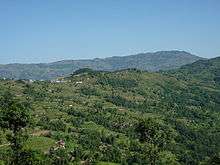
History
The name Balankha
There is a story behind the origin of the name Balankha. A long time ago, A Kirat Rai brother was traveling through this area with his pig. He spent a night here with his pig tied to little pole near by him. In the morning when he woke up he did not see his pig. He began to look for his pig saying "Baak Laamkhaa" (बाक लाम्खा ) meaning The pig got lost. He could not find his pig. He probably came back repeatedly to find his lost pig and asked help from locals too. In Rai Bantawa language "Baak" means a Pig and "Laamkhaa" means to get lost. So later on people began to call this place as Baak laamkha (place where the pig was lost). Over the course of time people started to pronounce as Balankha (बालंखा)
Local story of Shimbha Mala
There was a Kirati Chamling King known as Shimbha Mala (शिम्भा माला) in Chamlung (चामलुंग) village near Bopung. He was very powerful and very protective of this area. When King Prithbi Narayan Shah’s forces were advancing towards eastern Nepal, he did not want to give up his territory easily. Back in those days, Chandi Danda (चण्डी डांडा) was the main gateway to this area and it was covered with thick jungle. Shimbha Mala and his few warriors armed with bows and arrows fought against Prithvi Narayan’s soldiers and tried to stop them here. He and his warriors used to hide in the trees and attack their enemies with their arrows. They had little success in the beginning, but later, Prithbi Narayan’s forces overpowered and killed him. They buried him along with his horse at the Chandi Danda. The grave still remains in the area but not many people know about it.
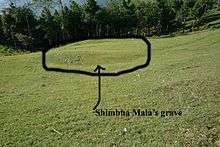
The local Kirat Rais believe that the ghost of Shimbha Mala still roams in the area especially in the nights on nights with a full moon, a new moon and during kirat festivals. It is also believed that anyone who digs up the grave will die. A long time ago, the ghost phenomena used to occur every night. People could hear the horse steps and the sound of bells while the ghost was on the ride from Purne Dada (पुर्णे डांडा) to Raake Dada (राँके डांडा). People were scared to take a walk along the Mulbato (मूलबाटो) at late night for fear of seeing the ghost. A local Chhetri man named Kaale Bista (काले बिष्ट) who lived near the main trail Mulbato was tired of the ghost phenomena every night. One night he was determined to face the ghost directly. He took a big sword KaTTi (कट्टी) in his hand and waited for the ghost. When the ghost arrived on the horse they faced each other. There was no words for few seconds, and all of the sudden, Kale Bista raised his weapon to attack the ghost, and thusly, the ghost became nervous and started to run away. Kale Bista chased the ghost few hundred yards away. Since then the Ghost has never appeared again in his area of Balankha. The great grandson of Kale Bista, Gadul Bista (गडुल बिष्ट ) who died in 2065 B.S. used to tell this story to the locals.
Chandi Bazar
A long time ago, during Panchayat system, Chandi Bazar village was the official name for this area, to include Thindingkha village. Later on, local administrative map was redesigned. After the restructruction of administrative areas, Chandi Bazar was partitioned into Thidingkha Village Panchayat and Balankha Village Panchayat. However, some older people still call it Amchok Balankha too because Aamchok is the Rana era or early Panchayat era administrative name.
Culture and society
Balankha is blend of various castes and ethnic groups. The majority are Kirat Rais but there are Kshetri, Bahun, Kami, Damai, Tamang, Sarki, etc. who have been living in harmony for ages.
Chhongkha Chandi (छोङ्खा चन्डी)
This is an important part of the cultural tradition of Kirat Rai people in this region. It is one of the most famous places to celebrate Kirat Rai's Sakela or Sakenwa festival. According to Kirat Rai historians, writers (Bam Bahadur Rai, Shyam Raj Rai and bulletins of Kirat Rai Yayokkhaa) and local people, it is about a 600-year-old tradition. The main ritual place is across the Buwa Khola (बुंवा खोला). It is called Chandi Than (चन्डी थान). In every Ubhauli (उभौली) festival, a designated Kirat Rai priest called Nakchhong (नाकछोङ) performs puja and prays to the Kirat Rai ancestors for rain, good crops, good health of the people and livestock and continuity of this great Creation. There are certain processes to perform the ritual, and all Kirat Rais have to follow it properly.
After the ritual is done, they come to Chandi danda or Chandi bazar (चन्डी बजार), an open space near Balankha bazaar. They dance Sakewa dance with Dhol(ढोल) and jhyamta (झ्याम्टा). The dance style is a little different than other Sakewa dances seen in northern Bhojpur and neighboring Khotang district. Here, the rhythm is very slow, as are the dance movements themselves. Others might find the dance less interesting because it has more singing and less dance steps. Most of the Kirat Rais in the southern belt like Hatuwa, Ranibas, Basikhora, Pawala, Khairang, Chhongkha, and so on have similar dance style of Sakenwa.
Beside Kirat Rai, there is a tradition of Bhote ko Mane (भोटेको माने) from Tamang culture. There are a significant number of Tamang people in Balankha. Mane is a kind of stupa they build in memory of their deceased. There used to be a lot of Mane alongside of the mulbato (main trail to Bhojpur), especially in Tinchule jungle, Pasal Bhanjyang, Raake Bazar. The tradition seems to be disappearing slowly. New Mane (माने) are rarely seen anymore. The old ones were all destroyed by treasure hunters almost two decades ago.
Bar Pipal, Chautari, Kuwa are the traditional landmarks in the area. Old Chautaris with beautiful inscriptions etched in stone slates in memory of deceased souls are still found. With old Bar (वर) and Pipal (पिपल) trees side by side and wooden Bench “Falaicha” (फलैंचा), a weary traveler could rest in comfort.
Dashain and Tihar festivals as celebrated as it has national significance. Beside that Kirat Rai's "Udhauli" and "Ubhauli" are two main festivals celebrated with great joy by whole region.
Education
Chandeswor Ma. Vi (Grade 1- 10)
Balankha's high school began in 2039 BS. The late King Birendra granted permission to establish Chandeswor High School during his visit to Ghoretar. This was the only High School in the whole Southwest region of Bhojpur and played a vital role to educate local population. Now more than 100 students participate in the SLC exam every year. Later other high schools in neighboring VDCs, e.g. Dummana and Wasing Tharpu were also established. The passing records of the students in SLC is significantly low and has often been questioned about its performance.
The SLC result of 2069 (2012) is about 13%. Out of 77 only 10 students succeeded SLC exam. 3 of them were able to secure first division. One time the Highschool was assigned as SLC Center, but later removed, due to the fact that it poorly conducted the exam and the cheating was uncontrolled.
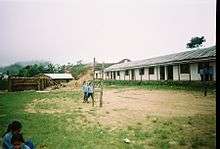
Chandeswor Uchcha Ma Vi (+2) चन्डेश्वोर उच्च मा. वि. २०६६
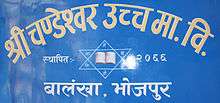
Chandeswor High School got approved for a +2 higher education system in 2066 B.S. With its establishment, students from seven other neighboring VDCs will have opportunity to complete their +2 degree in the local level. It has given boost to the educational development in this region.
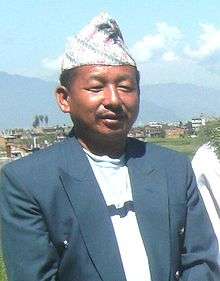
The former Chairman of School Management Board Rabin Rai, initiated the establishment of +2 school. He conducted meetings with local leaders, teachers, students, and made a common agenda for the school. He took the matter not only to the district level officials, but even to the central level in Kathmandu and gave the agenda to the Nepal government's Higher Education Council. He was able to justify the necessity of +2 school to the officials. Finally the school got approval to run the +2 classes. He quickly managed to find teachers and start the first badge of 11th grade in Balankha in 2066 B.S. Since then the new +2 school has played a key role in the region. It is running an education faculty with students of about 100 (both 11th and 12th grades) and four teachers. The principal of the institute is Ram Prasad Kafle.
Chandeswor Uchcha Ma Vi set the record among its peers in Bhojpur district in 11th grade examination of 2067 B.S. Out of 85 examinees 27 students passed the exam. This is merely 33% of the total but it is the highest percentage overall in Bhojpur district.
Kapil Guragain (कपील गुरागाइ) is the current Principal and Headmaster of the Chandeswor High School. The school board is chaired by Katak Bista (कटक विष्ट).
Politics
Present
The secretary of the Village Development Committee runs the day-to-day administrative tasks. For security reason, the secretary works at District Headquarters Bhojpur. This has been very inconvenient to local people but there is no elected local body and no constitution drafted yet. Few years ago a Sarbadaliya Samiti (a committee representing all parties) was running the VDC. The active political parties in this village town are Nepali Congress, CPN-UML, UCPN(M) and Rastriya Prajatantra Party.
Before the election of the constituent assembly, the area was dominated by NCP-UML. After the peace process and first constituent assembly election Maoist dominated over all local politics. But the Constituent Assembly became defunct after May 27, 2012.
Sherdhan Rai (शेरधन राई), Former Minister for Communication
After the 2nd round Constituent Assembly election 2070 B.S. , CPN-UML has dominated the local politics. The long time UML student wing activist turned- politician Sher Dhan Rai शेरधन राई from Thidinkha Village (थिदिङ्खा) became victorious to represent in National Assembly election. After the promulgation of new Constitution and formation of new government under UML, he was nominated for the position of Minister for Communication of Nepal Government. He is the first local politician from the whole southern part of Bhojpur to become a Cabinet Minister of New Republic Nepal. People of this whole region was proud of him. Unfortunately his tenure ended, as the new government was formed under the leadership of Pushpa Kamal Dahal.
He was also elected as member of House of Representative in 2056 B.S.
Past
In 2015 BS, Krishna Lal Rai contested in the local election of Bhojpur from the Gorkha Parishad led by Dr. K I Singh. He lost the election with the total vote of 360. Dhan Keshar Bista, Bhuidal Rai, Padam Rai are some notable local politicians during Panchayat system.
Ramu Rai and Balankha
It was Ramu Rai who led Balankha and whole southern belt to the main political arena of Bhojpur. He participated in General Election held in 1999 for the seat of Member of Parliament from Rastriya Prajatantra Party. A medical professional turned politician, Ramu was very popular among the people of Bhojpur, especially southern Bhojpur. Because of him, Balankha region finally got noticed in Bhojpur politics. He raised the local voice, local issues to the district authorities and central leaders. During the Panchayat regime he became synonymous with Balankha. People of far distant villages used to refer Balankha as "Ramu ko gaon" (Ramu's village).
As his popularity was growing, the Panchayat system was coming to an end. After the end of the Panchayat system in 1991, he did not opt to join the other mainstream political parties. He rather chose to stay with his former Pancha's pro king party Rastriya Prajatantra Party. The new political development slowly pushed aside all the pro king parties. It directly affected his political career, where most people were against the king. Many local youths who once were his staunch supporters, started to distance themselves. Later, he left Balankha and moved to Kathmandu.
Balankha at Present
As the motor road is expanding to south and north, there is noticeable change in Balankha bazar. When the most difficult road construction at the Tare Bhir between Pangcha and Balankha was completed, it in fact, not only connected Balankha to whole Terai region but it also opened up a new possibilities of trade and transportation activities of this region which will eventually support the local economy. Thanks to the local committee of road construction who in support of Minister Sherdhan Rai received one million Rupees from the Road Department and carried out the construction. The only obstacle now is to build a motor bridge on Koshi river linking Ranitar of Udaypur. Balankha is now well connected to all the major hubs of Bhojpur and Khotang districts such as Ghoretar, Mane Bhanjyang, Chisapani, Katunje etc. Recently local transportation entrepreneurs have started services from Balankha to Beltar and Dharan via Ranitar.
Balankha bazar has become more vibrant now than it was few years ago when there was no road. It is seeing more offices and more shops, hotel, restaurants, various services such as remittance service, mobile service, computer service and internet services etc. Telecommunication towers are also being built in the private and public both sector. Police post and Health post have already been serving the locals for long time. Beside that local farmers have started to grow various types of cash crops.
A significant number of people from Balankha and surrounding are working abroad. They all support their family and village through remittance they send. Keeping this in mind Western Union services is now operating locally and it is a big relief as local people do not need to travel to Ghoretar or Bhojpur to receive their money sent by their loved ones.
The Balankha Support Group (BSG) is one small group that has been trying to help Balankha too. Currently it is trying to provide books and set up a library for Chandeswor High School. Through social media like Facebook it has created a network among the people who are directly and indirectly related to Balankha and the surrounding area. In future it is aiming to contribute to other social issues of the region.
Offices in Balankha:
- Health Post (staffed by three health workers)
- Police Post (staffed with eleven personnel)
- Women Development organization
- Agricultural Development Branch
- Chandeswor Higher Secondary School (+2)
Challenges
Road has brought new hopes and possibilities for the growth of this bazar. However every growth has growing pains. Balankha as an emerging town needs to address a lot of issues and challenges before they become huge problem. As bazar grows, it needs enough Water Supply, proper Garbage and Drain system, Electricity or Solar power, uninterrupted Communication System, Health care facilities, Police Station and Emergency Services. The local authorities and bazar people should not be too late to focus on these infrastructure developments.
Other features such as Park, Sports ground, Wide street with side walk, tree plantation along the road and even proper building design and clean environment should also be considered, if Balankha wants to be a model town in the region.
References
- ↑ "Nepal Census 2001". Nepal's Village Development Committees. Digital Himalaya. Archived from the original on 12 October 2008. Retrieved 13 September 2008.
External links
| Wikimedia Commons has media related to Balankha. |
- Return to Bhojpur- ICRC report
- UN map of the municipalities of Bhojpur District
- National Geographic Country Profile: Nepal
- Bhojpur District Environmental Brief, September, 2001- RAP report
- Loss of Lives and Properties by Fires 2061 - Home Ministry Data
- Domestic violence against women rampant - Republica Social Affairs
- भोजपुर जिल्ला बिकास समिती
- Kirat Rai Society of America
- Nepal the Panchayat constitution 1962
- "Nepal: Basic Fact Sheet". Nepal homepage. Archived from the original on 2005-05-24. Retrieved 2005-09-23.
